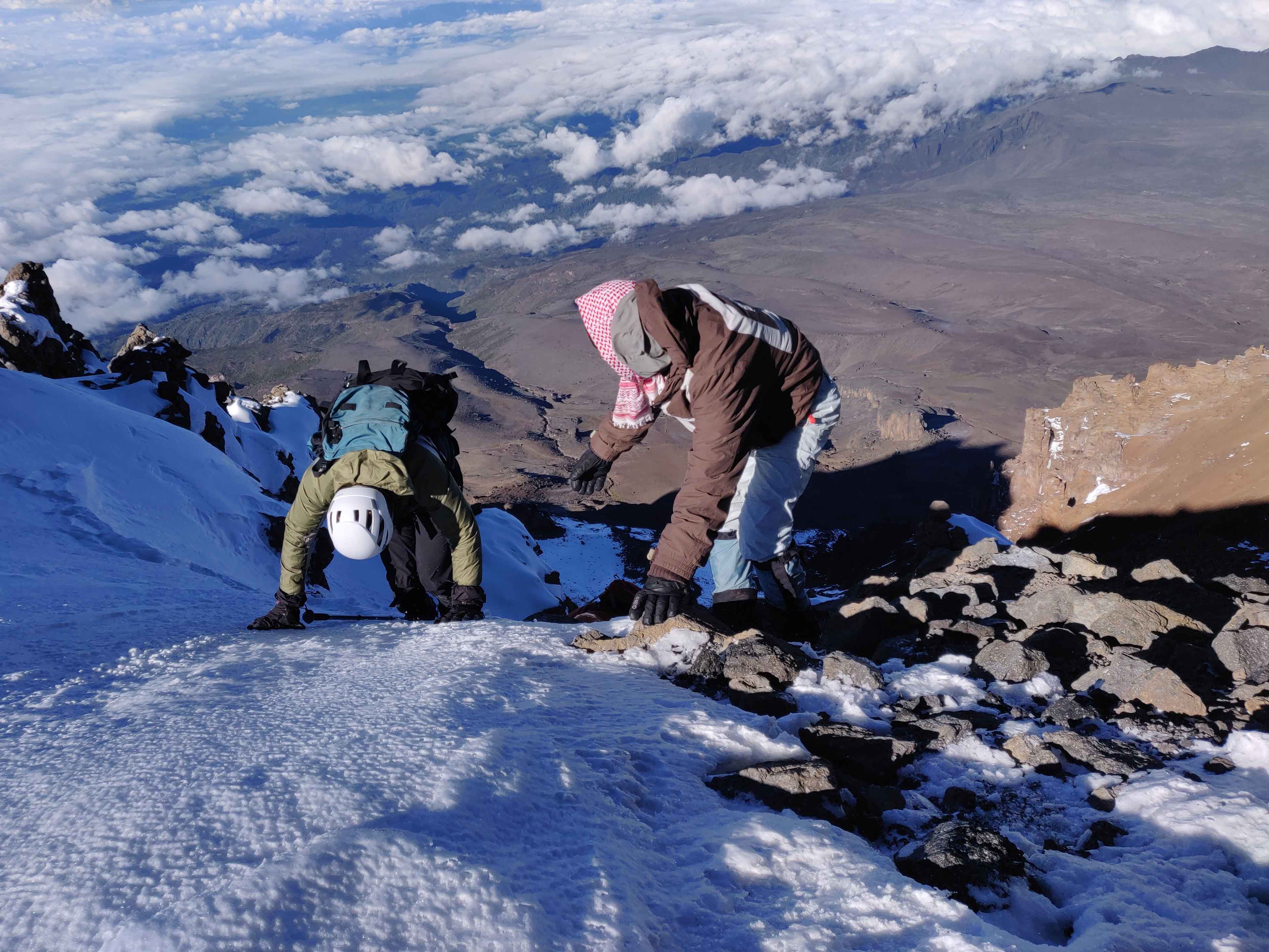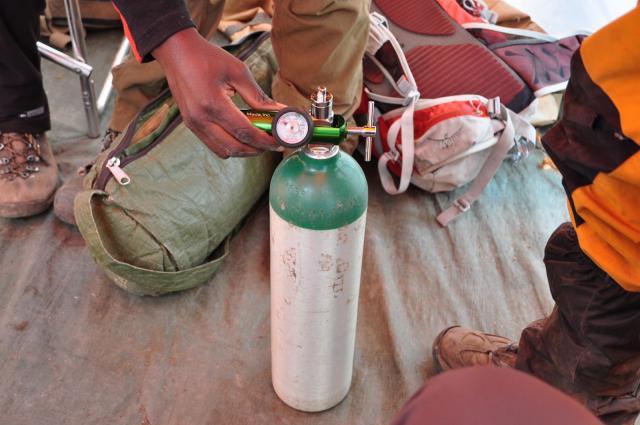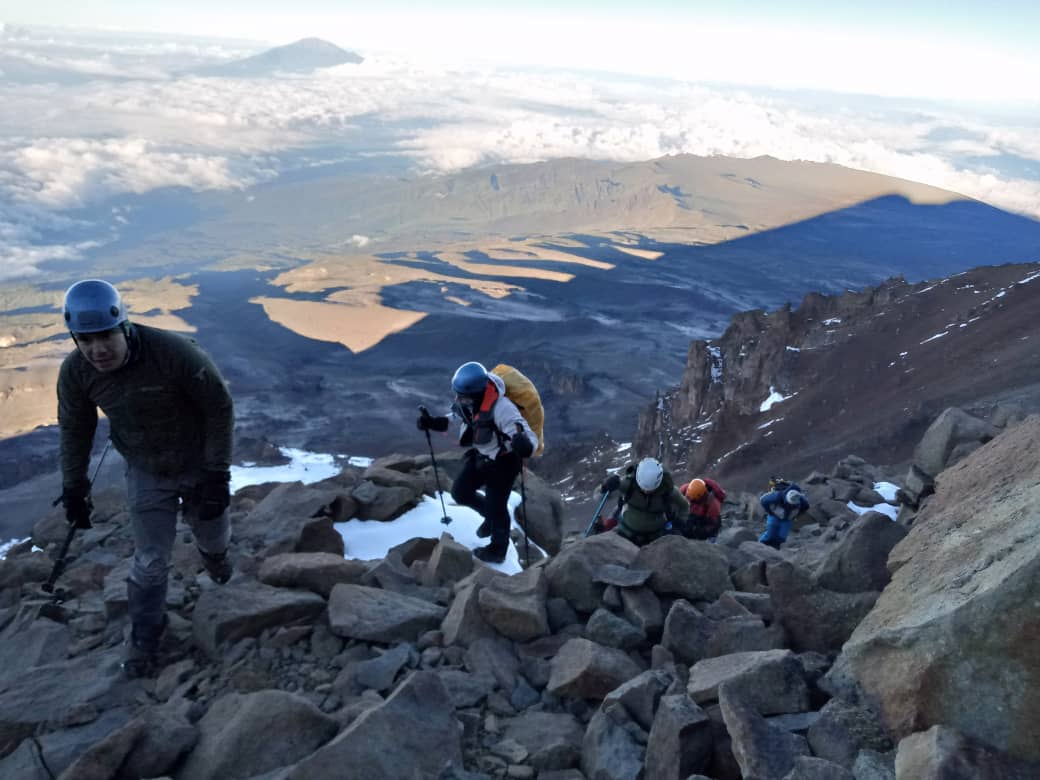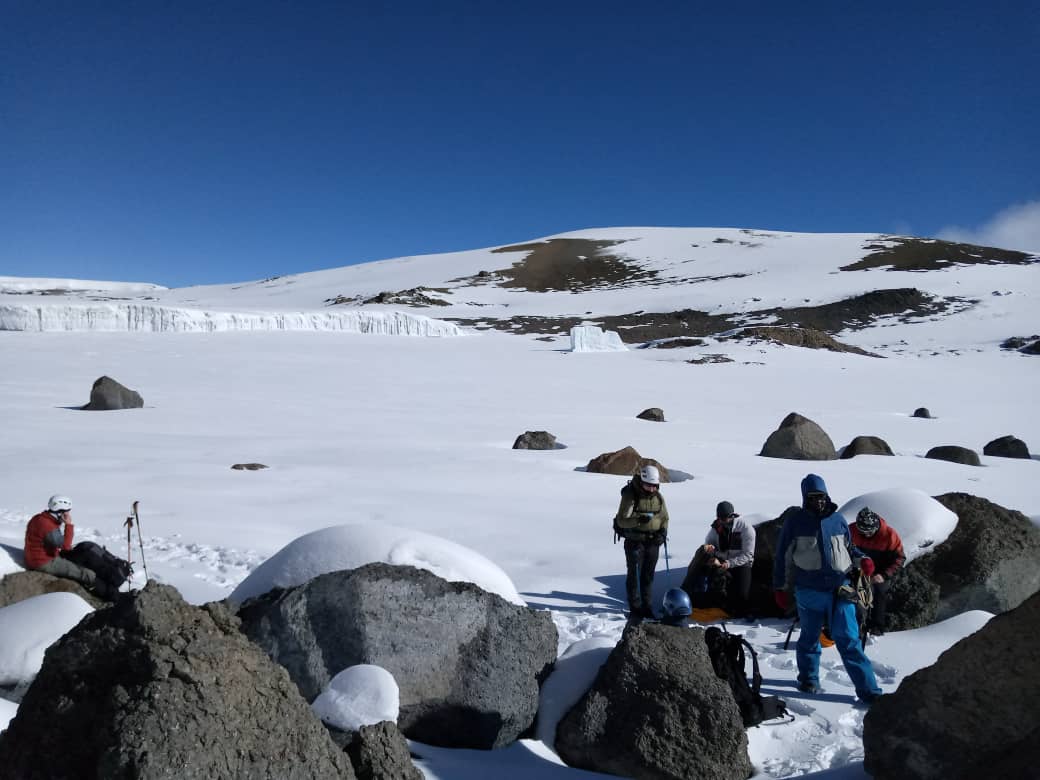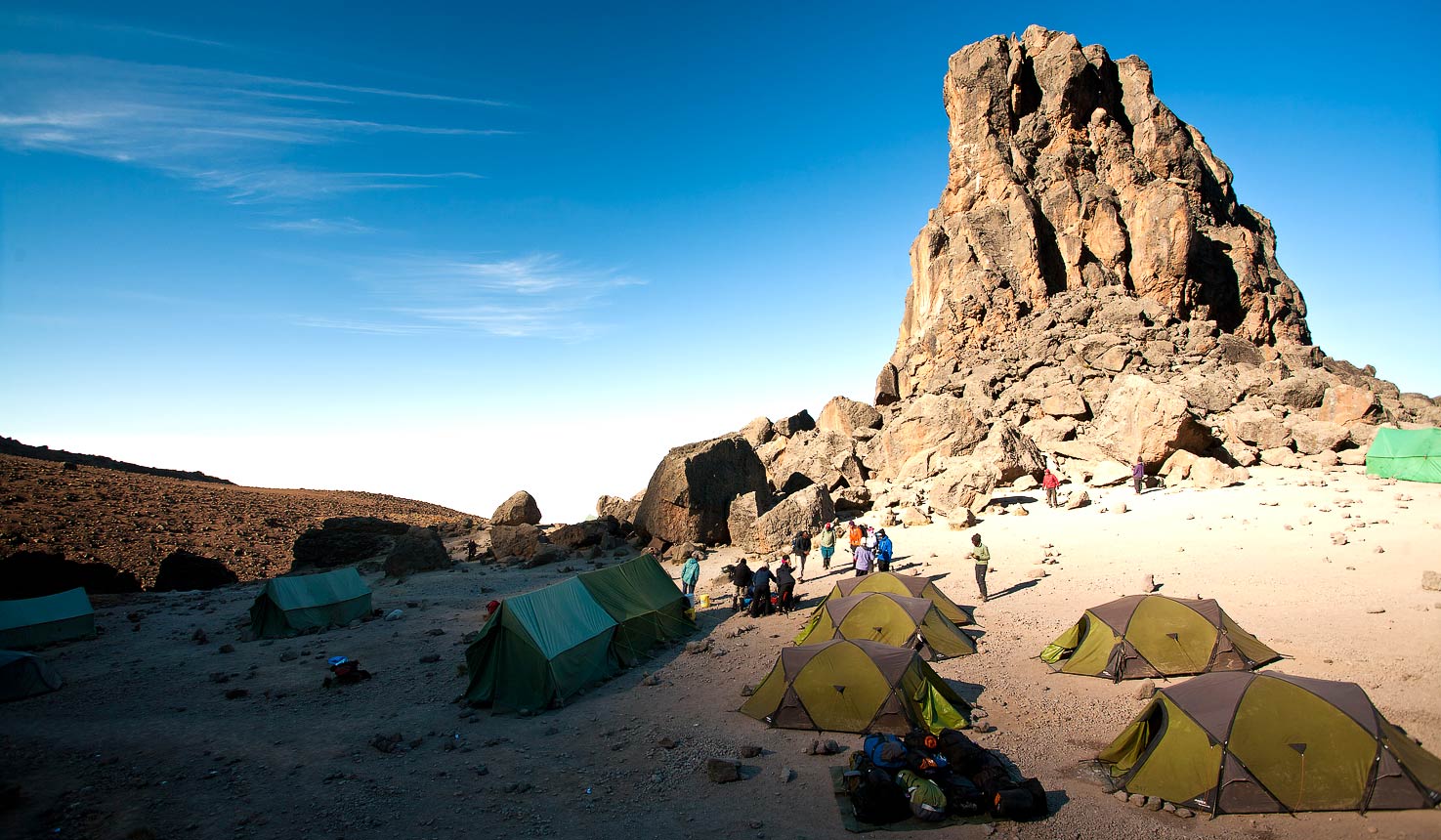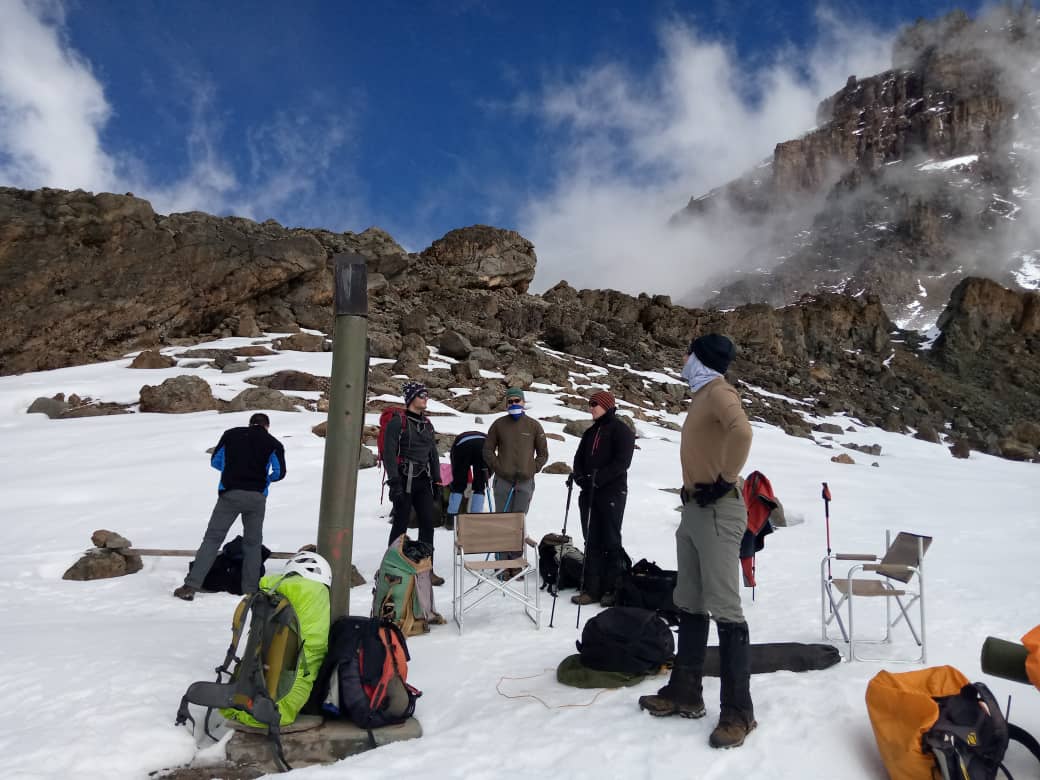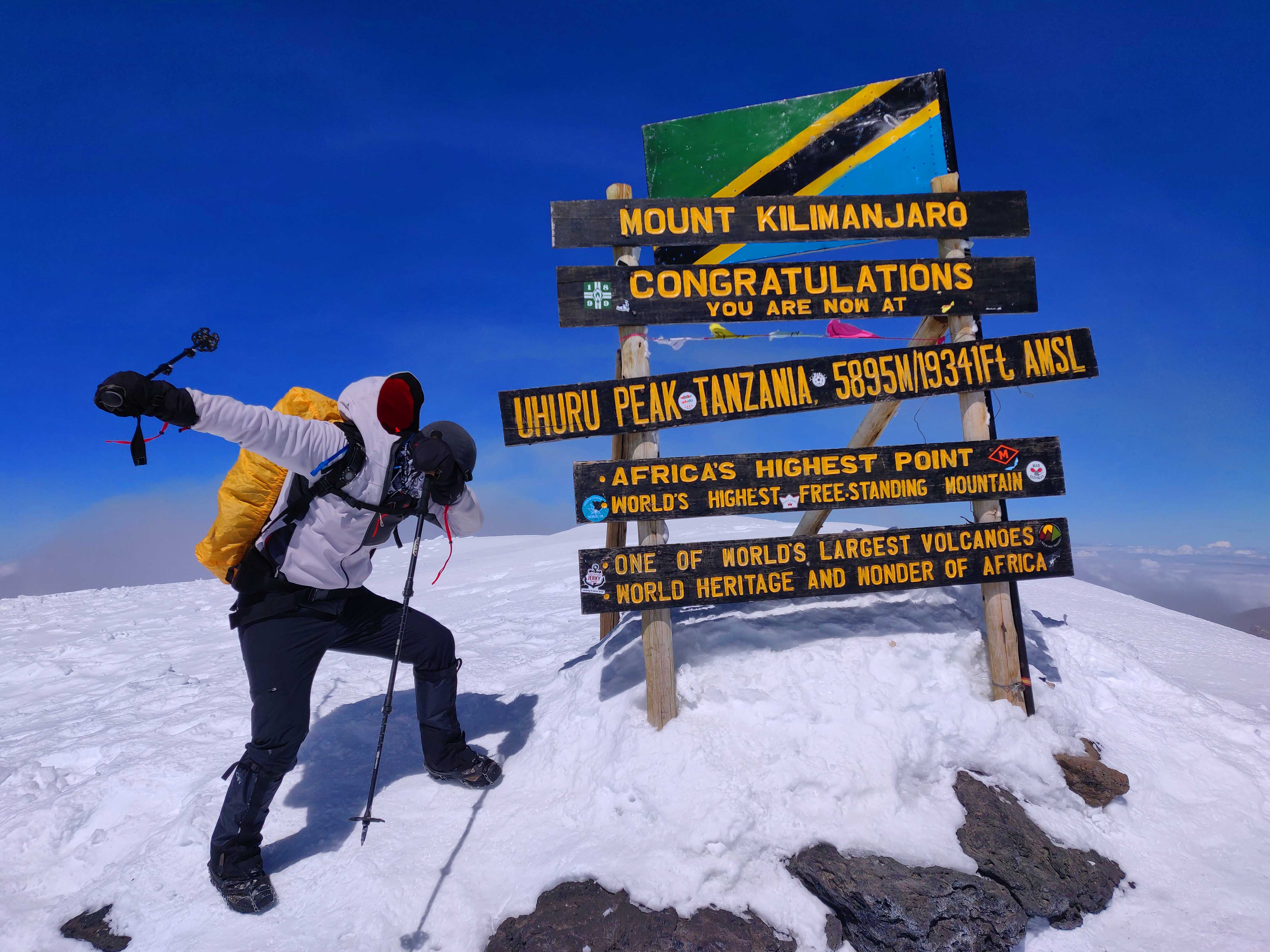Packing List for the Western Breach
The Western Breach is the most technically challenging approach to Kilimanjaro. It was closed for a short period in early 2006 after a fatal rockfall claimed the lives of three trekkers. It has however re-opened with a new and safer route configuration, and is steadily growing in popularity.
There are some specific Kilimanjaro kit requirements for the Western Breach that you should be aware of. Many of these items are not mandatory, however should conditions on the Western Breach be adverse you may need the following:
- Climbing helmet to protect your head from the potential risk of falling rocks
- An ice axe and point crampons – it is unlikely that you will need these items, however if you are climbing during the wet season it is likely you will encounter sub-surface ice from refrozen meltwater and deep snow. Usually your guides will have the correct gear to cut steps on these sections (we recommend you confirm with us exactly what gear you will need for the Western Breach)
It is very unusual to need rope or a climbing harness. Again we recommend you confirm with us which Kilimanjaro kit list we recommend you to bring should you decided to climb the Western Breach.
Here’s our Mount Kilimanjaro packing list including what to wear, sleeping equipment, toiletries, paperwork, health products, electrical equipment paperwork, money and a few miscellaneous items!
Technical Clothing
1 – Waterproof Jacket, breathable with hood
1 – Insulated Jacket, synthetic or down
1 – Soft Jacket, fleece or soft-shell
2 – Long Sleeve Shirt, light-weight, moisture-wicking fabric
1 – Short Sleeve Shirt, light-weight, moisture-wicking fabric
1 – Waterproof Pants, breathable (side-zipper recommended)
2 – Hiking Pants (convertible to shorts recommended)
1 – Fleece Pants
1 – Shorts (optional)
1 – Long Underwear (moisture-wicking fabric recommended)
3 – Underwear, briefs (moisture-wicking fabric recommended)
2 – Sport Bra (women)
Head wear
1 – Brimmed Hat, for sun protection
1 – Knit Hat, for warmth
1 – Balaclava, for face coverage (optional)
1 – Bandana (optional)
Hand wear
1 – Gloves, warm (waterproof recommended)
1 – Glove Liners, thin, synthetic, worn under gloves for added warmth (optional)
Footwear
1 – Hiking Boots, warm, waterproof, broken-in, with spare laces
1 – Gym Shoes, to wear at camp (optional)
3 – Socks, thick, wool or synthetic
3 – Sock Liners, tight, thin, synthetic, worn under socks to prevent blisters (optional)
1 – Gaiters, waterproof (optional)
Accessories
1 – Sunglasses or Goggles
1 – Backpack Cover, waterproof (optional)
1 – Poncho, during rainy season (optional)
1 – Water Bottle (Nalgene, 32 oz. recommended)
1 – Water Bladder, Camelbak type (recommended)
1 – Towel, lightweight, quick-dry (optional)
1 – Pee Bottle, to avoid leaving tent at night (recommended)
Stuff Sacks or Plastic Bags, various sizes, to keep gear dry and separate
Equipment
1 – Sleeping Bag, warm, four seasons
1 – Sleeping Bag Liner, for added warmth (optional)
1 – Trekking Poles (recommended)
1 – Head lamp, with extra batteries
1 – Duffel bag, for porters to carry your equipment
1 – Daypack, for you to carry your personal gear
Other
Toiletries
Prescriptions
Sunscreen
Lip Balm
Insect Repellent, containing DEET
First Aid Kit
Hand Sanitizer (recommended)
Toilet Paper
Wet Wipes (recommended)
Snacks, light-weight, high calorie, high energy (optional)
Pencil and Notebook, miniature, for trip log (optional)
Camera, with extra batteries (optional)
Paperwork
Trip Receipt
Passport
Visa (available at JRO)
Immunization Papers
Insurance Documents
Food
We generally provide breakfast, lunch, dinner and drinking water during your climb. You’ll want to add to this by bringing snacks, drink mixes and energy foods. Check here to see what food is provided.
Energy bars
Energy gels
Electrolyte replacement drink mix
Snacks (cookies, GORP, Snickers, etc.)
